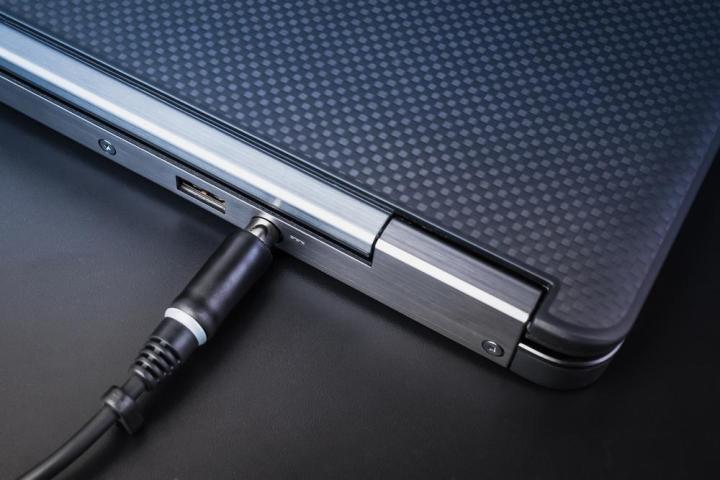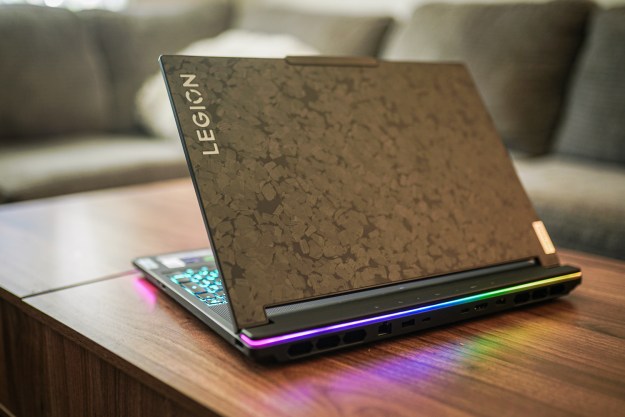
There’s another hero in this story, though, one that whose victories go unsung. The battery. While everyone knows that battery life matters, the battery itself is often ignored in the story of the modern laptop. Gains are assumed to come from processor improvements or more efficient screens.
In fact, batteries have changed over the last half-decade, and in doing so they’ve enabled systems that are razor-thin, yet last all day, and can continue that performance for several years. Here’s the untold story of the humble battery.
Evolution, not revolution
Enthusiasts, fans and shoppers love to hear about new chips, new designs, new technology. The battery, to its misfortune, doesn’t offer that. Today’s notebooks rely on lithium-ion cells, which have been around for decades, and were first used commercially in the early 1990s.
Manufacturers can cram in more battery, or reduce size – and often choose the latter.
“Batteries aren’t a device that never existed before. It’s not a transition from tapes to CDs. It’s evolutionary, not revolutionary,” said Rick Thompson, Dell’s Battery Technologist in the Office of CTO. While there’s a wide variety of research projects investigating potential battery breakthroughs, none of them are on the cusp of becoming a commercial reality. “It’s easy to say you’ve got a battery that charges in one minute, or is optimized for some other performance metric. But what’s the weight? What’s the power? What’s the cost?”
It’s that last matter, in particular, that’s made new battery technologies difficult to pursue. Laptop manufacturers endure notoriously thin profit margins, so there’s no room to experiment with drastically more expensive batteries.
But that’s not to say the technology hasn’t changed. It’s evolved rapidly, and that evolution has transformed modern laptop batteries. Dell has seen energy density improve by up to 35 percent over just the last few years. A variety of techniques are used to achieve these gains, from slight changes in battery chemistry, to a slimmer insulating layer separating the positive and negative sections of each cell. Such steps don’t make for great headlines, as a radical new innovation would, but over time they add up to real gains.
Size matters
Packaging, a decidedly un-sexy term, is another source of battery innovation. Laptops from the last decade often used a standardized cell, designed for all notebooks regardless of size.
“Five years ago, almost all our systems used cylindrical batteries,” explained Phil Jakes, Lenovo’s Director of Strategic Technology Innovation. “They were AA-like cells called 18650s.” Manufacturers didn’t request batteries to fit their laptops, but instead designed

That begin to change at beginning of this decade, as the MacBook Air and Intel’s ultrabook initiative caught on. Consumers wanted thinner systems, but also expected them to last just as long – if not longer – than before. “The drive for thinner systems moved us to lithium-polymer pouch cells, which are for the most part rectangular,” Mr. Jakes said. These new cells can be more easily crammed into small spaces and spread across the width of a notebook. Even these might be soon be replaced by custom-designed batteries, a trend that’s being pushed by smartphones and cutting-edge notebooks, like Apple’s MacBook.
Oddly, this improvement in packaging actually hides gains in energy density. Dell’s Thompson explained this, saying “Once we get to an all-day run time, we just start to shrink the products. Batteries are enabling products to be 15mm thick today.” Manufacturers have the choice to cram in more battery, or reduce size – and often choose the latter.

Dell’s XPS 13 is an excellent example. The original, which debuted in 2012, was 12.4 inches wide, eight inches deep and seven-tenths of an inch thick. Today’s version is just under a foot wide, slightly shallower, and a tenth of an inch thinner. It also weighs half a pound less. Despite all that, it lasts about twice as long on a charge.
Thompson told us it could last even longer, as it’d have a massive 75 watt-hour battery (rather than the current 52 watt-hour unit) if the design was never upgraded to its current slim-bezel look. But, because the new model already lasts more than a work day, the company decided to slim it instead.
Longevity is better than you think
Of course, excellent battery life isn’t of much use if out-of-the-box performance degrades too quickly. It’s a known fact that all lithium-ion batteries, no matter how they’re built or what they’re placed in, wear out. Fortunately, endurance has been as much a focus as energy density.
Dell knows rapidly degrading battery performance would turn buyers off its laptops.
“We’re seeing a movement to a much longer calendar life expectation. Batteries are typically captured today, embedded in a system. They’re not intended to be swapped out, so we have to look at overall life,” said Dell’s Thompson. While cynics often state manufacturers are using built-in batteries as a way to encourage planned obsolesce, Dell doesn’t see it that way. The company knows rapidly degrading battery performance will make users unhappy – and less likely to buy a Dell the next time around.
Lenovo’s Phil Jakes told us his company has a similar stance, and also said battery endurance has improved significantly in recent years. Design changes made in the leap from the older, cylindrical batteries to newer, prismatic models have improved charge cycles from a maximum of around 500 to about 1,000. And a battery that’s considered worn isn’t useless – while tolerances for wear differ from one company to the next, most cells offer 60 to 70 percent of their original capacity at end-of-life.
Conclusion
There is no battery revolution on the horizon. Our lives would be changed if a new technology doubled energy density overnight, but that’s a foolish dream. Batteries are bound by physical realities encoded in the laws of the universe. Evolution has always been the battery game, and will remain so for the foreseeable future.
Still, batteries deserve credit. A thousand small steps forward doesn’t make the headlines of one giant leap, but it’s progress all the same. It’s true that processors, graphics chips, screens and hard drives consistently demand efficiency, but the dramatic increase in battery life witnessed in recent years can’t be explained by them alone. The unseen, unappreciated battery is just as important, and we couldn’t enjoy today’s ultra-slim laptops without it.
Editors' Recommendations
- The 5 weirdest laptops ever made that you forgot existed
- 6 laptops you should buy instead of the MacBook Air
- It’s the right time to buy an older gaming laptop
- This laptop has a customizable, color e-ink screen right on its lid
- Lenovo just made my favorite gaming laptop even better


